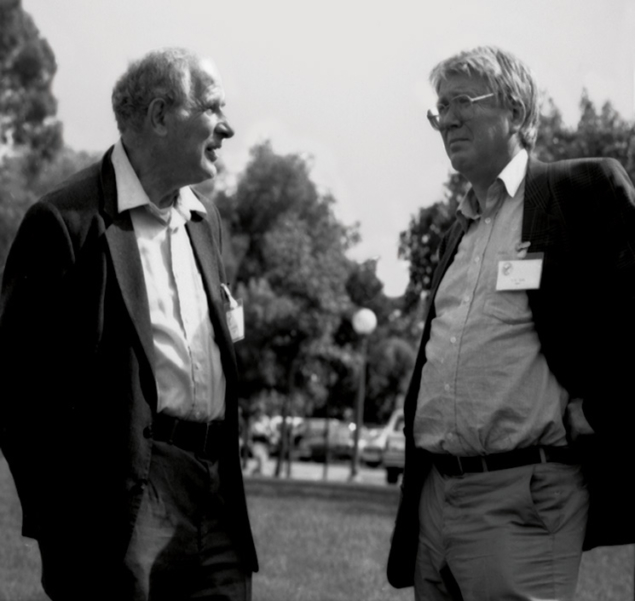
David Mark Ritson, professor emeritus of physics at Stanford University, died peacefully at home on 4 November 2019, just shy of his 95th birthday. He was the last of the leaders of the original seven physics groups formed at SLAC: four of the other leaders were awarded Nobel prizes in physics.
Dave Ritson was born in London and grew up in Hampstead. His ancestors emigrated from Australia, Germany and Lithuania, and his father, a Cambridge alumnus, wrote Helpful Information and Guidance for Every Refugee, distributed in the 1930s and 1940s. Dave won scholarships to Merchant Taylors’ School and to Christ Church, Oxford. His 1948 PhD work included deploying the first high-sensitivity emulsion at the Jungfraujoch research station, and then developing it. Within the data were two particle-physics icons: the whole π → μ → e sequence, and τ-meson decay.
Dave moved to the Dublin IAS, to Rochester and to MIT, doing experiments which helped prove that the s-quark exists. His results were among many that underpinned the “τ–θ puzzle”, solved by the discovery of parity violation in beta and muon decay. Dave also assisted accelerator physicist Ken Robinson with the proof that stable storage of an electron beam in a synchrotron was possible. In 1961 he and Ferdinando Amman published the equation for disruption caused by colliding e+e– beams. “Low beta” collider interaction regions are based on the Amman–Ritson equation.
Dave edited the book Techniques of High Energy Physics, published in 1961, and then took a faculty position in the Stanford physics department – bringing British acuity and economy to the ambitious SLAC team. Between 1964 and 1969, he and Burt Richter submitted four proposals to the US Atomic Energy Commission (AEC) for an e+e– collider, all of which were rejected. Dave designed the 1.6 GeV spectrometer in End Station A to detect proton recoils, which were used to reconstruct “missing mass” and to measure the photoproduction of hard-to-detect bosons.
After 1969 Dave founded Fermilab E-96, the Single Arm Spectrometer Facility, and obtained contributions from many institutions, including Argonne, CERN, Cornell, INFN Bari, MIT and SLAC. It was unusual for accelerator labs to support the fabrication of experiments at other lab’s facilities. Meanwhile, SLAC found internal funding for the SPEAR e+e– collider, a stripped-down version of the last proposal rejected by the AEC and led by Richter, driving the epic 1974 c-quark discovery.
Dave returned to SLAC and in 1976 led the formation of the MAC collaboration for SLAC’s new PEP e+e– collider. The MAC design of near-hermetic calorimetry with central and toroidal outer spectrometers is now classic. Bill Ford from Colorado used MAC to first observe the long b-quark lifetime. In 1983 Dave led the close-in tracker (vertex detector) project with the first layer only 4.6 cm from the e+e– beams, and verified the long b-quark life with reduced errors.
He formally retired in 1987 but was active until 2003 in accelerator design at SLAC, CERN, Fermilab and for the SSC. He helped guide the SLC beams through their non-planar path into collision, and wrote several articles for Nature. He also contributed to the United Nations’ Intergovernmental Panel on Climate Change.
Dave was intensely devoted to his wife Edda, from Marsala, Sicily, who died in 2004, and is survived by their five children.





